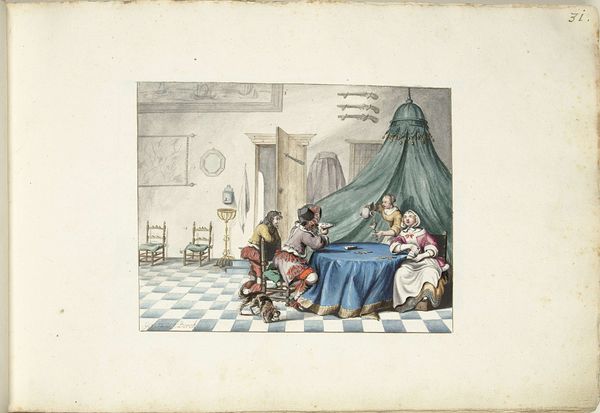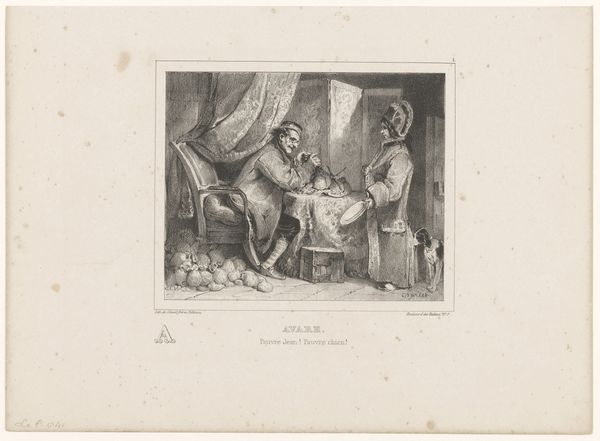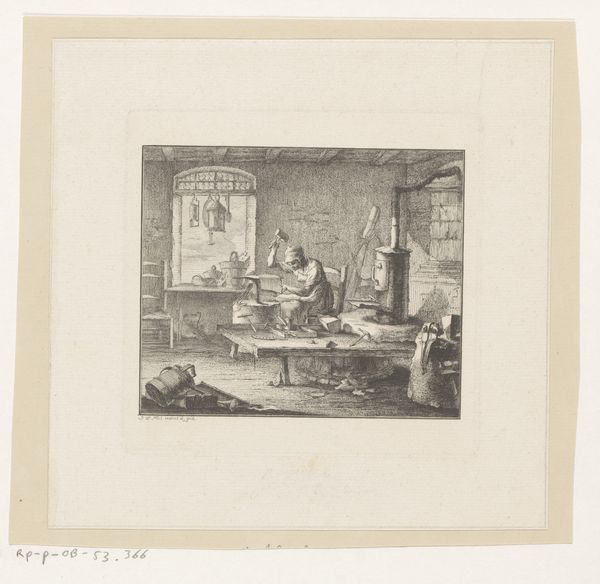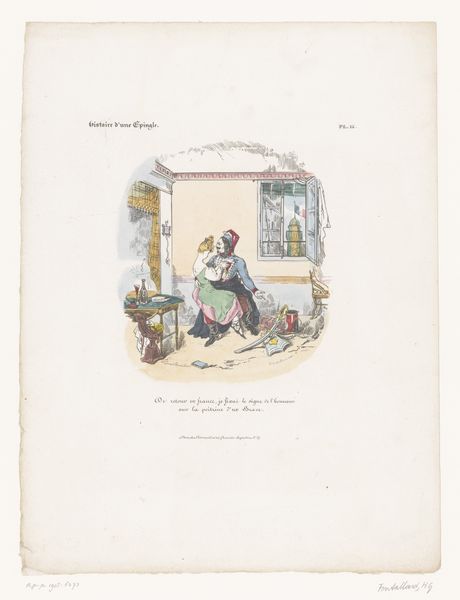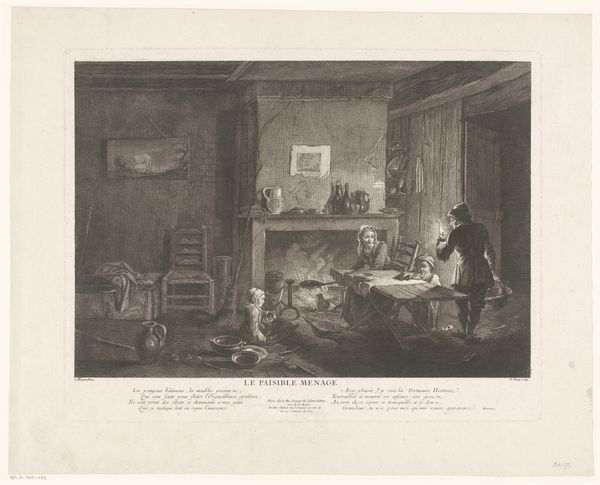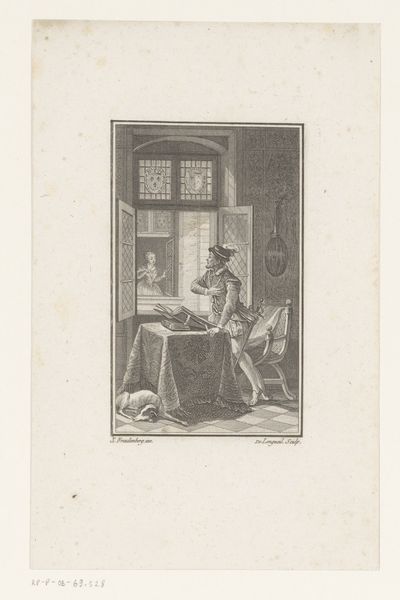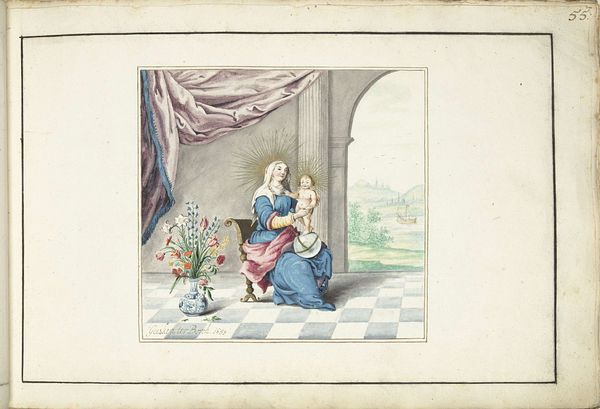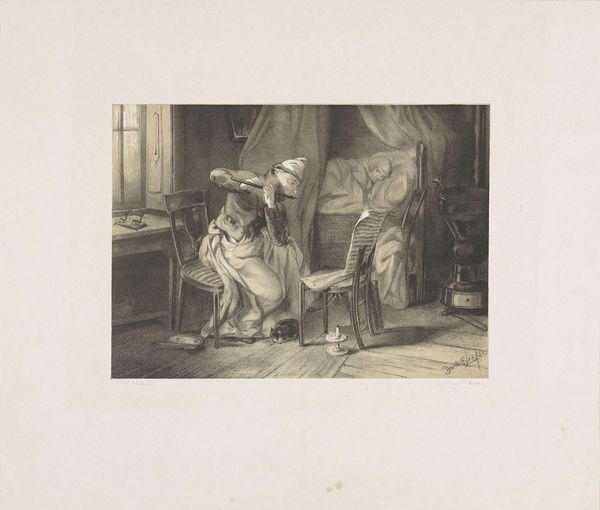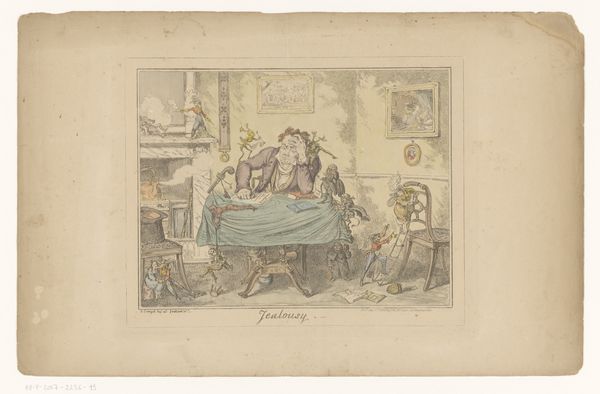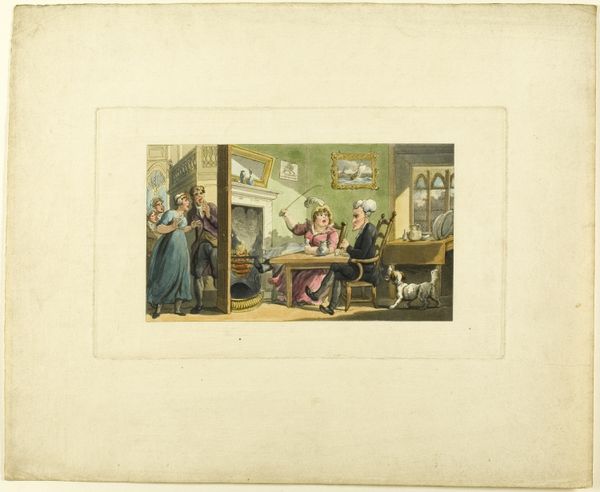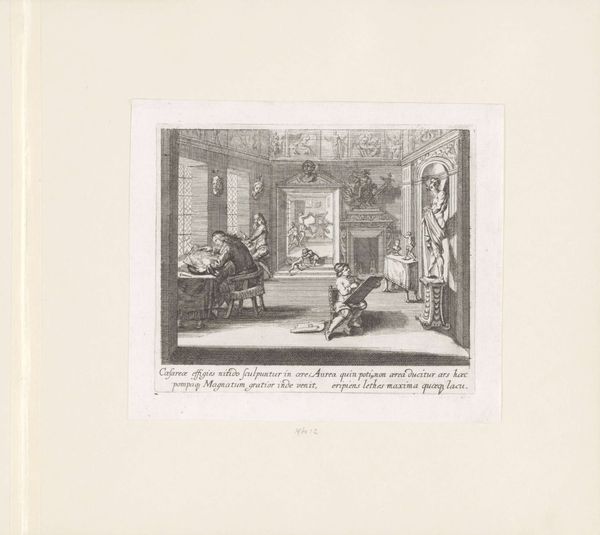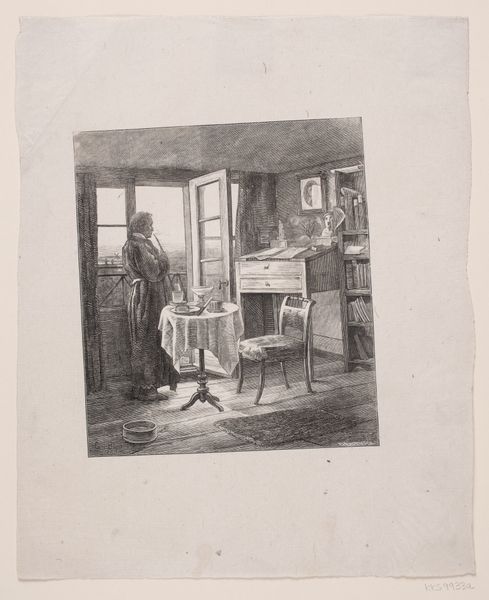
drawing, watercolor
#
portrait
#
drawing
#
water colours
#
dutch-golden-age
#
watercolor
#
coloured pencil
#
genre-painting
#
watercolor
Dimensions: height 157 mm, width 187 mm, height 243 mm, width 360 mm
Copyright: Rijks Museum: Open Domain
Editor: This watercolor drawing, titled "Heer die een dame voorleest," was created around 1660-1661 by Gesina ter Borch, and it depicts a man reading to a seated woman in a domestic interior. The style and use of color give it a quiet, intimate feel. What do you find particularly interesting about this piece? Curator: This piece provides a fascinating window into the social dynamics of the Dutch Golden Age, particularly regarding gender roles and domestic life. We see a man, likely of a certain social standing, engaging in an activity traditionally associated with leisure and female accomplishment: reading. Who gets to access literacy and knowledge is at stake here. Note also how the fireplace warms not the man reading, but the woman: domestic tranquility at what cost? Editor: So you see this image as a comment on societal roles? It seems very ordinary on the surface. Curator: It's in the everyday that power structures are often most subtly reinforced. Consider the composition – the man dominates the center, bathed in light at a well furnished desk while the woman is situated by the hearth, relegated to the side with her basket. Ter Borch doesn't overtly criticize but gently reveals the inequalities of her time by simply portraying the ordinary circumstances around her. The act of reading is not just an entertainment, but reinforces his authority. Editor: That’s a perspective I hadn’t considered. I was initially focused on the cozy setting. Now I wonder, was Ter Borch subtly critiquing this power dynamic through her art? Curator: Exactly! And the fact that this scene is rendered in watercolor, a medium considered less prestigious than oil painting at the time, raises further questions about the artist's position and intent within the art world. Did her gender influence this choice, this rendering of the daily life? Editor: I guess there’s a lot more here than initially meets the eye. I’ll definitely look at genre scenes with a different perspective now. Curator: That’s the power of art – to invite us to question the world around us. I'm glad we could explore it together.
Comments
No comments
Be the first to comment and join the conversation on the ultimate creative platform.
